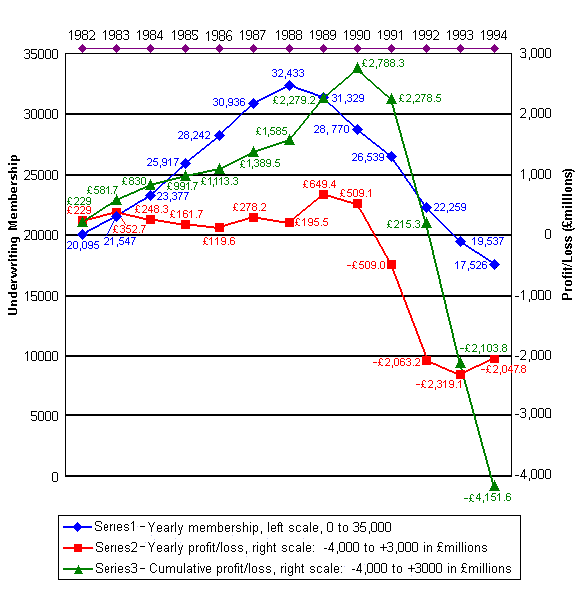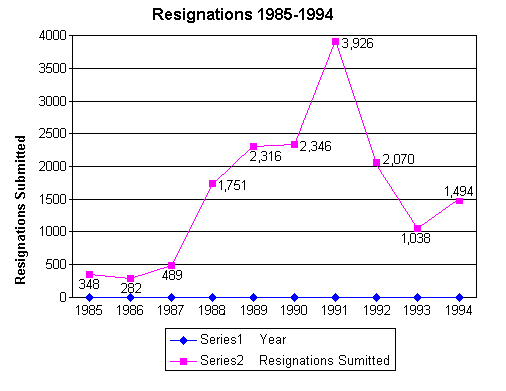

The years 1988 to 1991 are of particular note in the graph above. In 1989 and 1990, Lloyd's reported their best profits ever (representing the results of syndicates years 1986-87, due to Lloyd's 3-year time lag in reporting the results of a given year's underwriting). Lloyd's was moreover using those profit figures both to actively recruit new members, and to encourage existing members to increase their deposits at Lloyd's and thus the amount of premium the member could underwrite.
It is inconceivable that Lloyd's Council and accounting department were unaware of the rapid deterioration of the 1988 results during 1989 and 90, but nary a word was said of the losses that were accumulating during that time against the 1988 year of account, to the total of the -£509 million reported in 1991.
During those same apparently best years ever, resignations jumped dramatically, from an average of a few hundred a year up into the thousands. Lloyd's actively underwriting membership dropped from its peak of 32,433 in 1988 to 31,329 in 1989 (minus 1104), and to 28,770 in 1990 (minus 2559 more), and to 26,539 in 1991 (total drop = 5894). Under Lloyd's byelaws, resignations had to be submitted one year, to take effect the next. In 1988, 1989, and 1990, resignations submitted were 1,751, 2,316, and 2,346 respectively (total = 6413). See the graph below of resignations from 1985 to 1994.
The glaring questions raised by these facts and figures are: (a) who among Lloyd's membership knew to resign before the 1988 losses hit in 1991; and (b) how did they know? Lloyd's certainly was not making the coming losses known to the Names in general! Lloyd's was doing everything it could to get most of the Names to increase their premium limits-- which no sensible Name would do if they knew of the coming large-scale losses.
In the three years prior to 1988, resignations averaged 1.3% of the active members per year. Suddenly, and during the most profitable three years in Lloyd's history, resignations jumped to 5.4%, 7.4% and 8.2% (an average of 7%) of active members per year. Discounting 2% (more than the average of the prior years) as typical, around 5% per year of Lloyd's membership got out for no apparent reason during 1988, 89 and 90. The implication that the resigning Names were privy to inside information is obvious.
